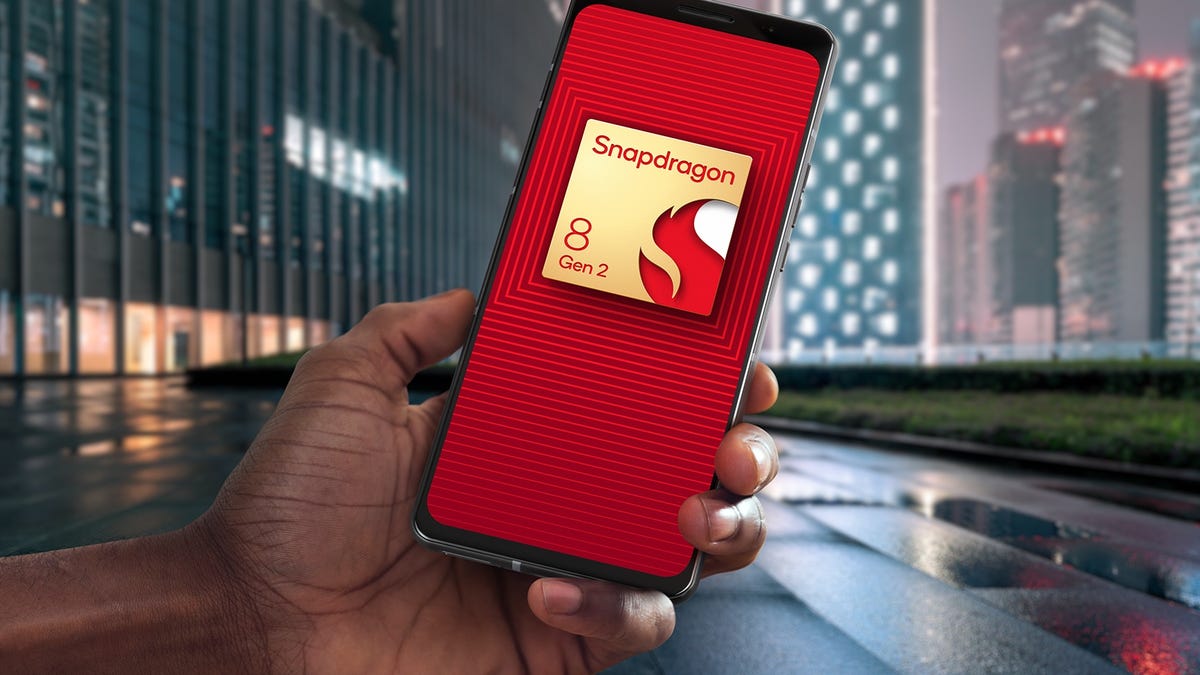
Snapdragon Satellite will come on devices with the Snapdragon 8 Gen 2 system on a chip.
Qualcomm
![]()
One of Apple’s most significant perks on the iPhone 14 lets you send emergency texts using satellites when you’re outside the range of your mobile network. Later this year, Android phones will get a similar capability to relay emergency texts virtually anywhere on Earth through satellites orbiting the planet.
At CES 2023, Qualcomm debuted Snapdragon Satellite, a service that uses orbital communication company Iridium’s constellation of 66 satellites to relay emergency texts and data for free. While this keeps Android phones on par with iPhone’s advances, it also ushers in an era in which emergency communications don’t stop at the edge of mobile networks.
Read more: CES 2023’s Biggest Reveals
Like Apple’s Emergency SOS feature, Snapdragon Satellite will come standard on phones and won’t be routed through a third-party service. And like Apple’s feature, you’ll simply need to angle your phone to the sky for the best chance of linking up with a satellite to send your emergency message. If you can’t snag one, you can just try again in eight to 12 minutes when the satellites — which orbit the planet at around Mach 20 — come around again, Qualcomm said.
Qualcomm went with satellite communications provider Iridium for its Snapdragon Satellite feature.
Iridium
Snapdragon Satellite, set for release in the second half of 2023, will come on devices with the latest Snapdragon 8 Gen 2 system on a chip and the Snapdragon X70 modem, which was introduced at MWC 2022. For now, only devices with both pieces of hardware will have the feature, which will likely be the top-end phones coming out this year like the Samsung Galaxy S23.
Qualcomm may trickle the feature down to devices with lower-end chips but has no definitive plans to do so right now.
Qualcomm hasn’t outlined all the details yet. We don’t know how the interface will work or whether it will let you send texts normally or will walk you through a small questionnaire before sending a message like Apple’s Emergency SOS does. It’s also unclear how long Qualcomm will offer the service for free. For comparison, Apple has committed to two years of Emergency SOS for free.
Beyond supporting emergency texting, Qualcomm has plans to offer a premium service to let you use the satellites to send data or texts for more social purposes — like bragging about sailing your yacht, Snapdragon Vice President Francesco Grilli joked. Qualcomm didn’t reveal how much that service would cost.
Whatever way people use them, Iridium thinks its constellation of satellites can handle the load of messages. “We’re quite confident that our capacity is more than enough for this service,” Iridium Chief Technical Officer Greg Pelton said.
There are limits to the Iridium satellites, which were launched 25 years ago, and their GSM-like signal system is closer to 2G than 5G, Grilli said. That means you won’t be able to use Snapdragon Satellite for voice calls unless Iridium sends up newer satellites. But with a 50-year lifespan on the satellites, Qualcomm is confident that Iridium’s constellation has decades of life ahead of it to relay texts.
Qualcomm went with Iridium for its constellation’s proven ability rather than go with a company that hasn’t been operational for as long, the company said.
Apple uses Globalstar’s network of 24 satellites (with 17 more on the way) for its Emergency SOS service. T-Mobile has partnered with SpaceX to use its existing Starlink cluster of microsatellites for out-of-network emergency texting.
Verizon is working with Amazon’s Project Kuiper, which aims to use a microsatellite cluster like Starlink for emergency messaging and potentially to supplement its 4G and 5G mobile network, though to date Amazon hasn’t launched any of the 3,236 microsatellites it plans to put into Earth’s orbit.
Though AT&T had partnered with satellite communications company OneWeb for limited business connections, last fall the carrier signed its own agreement with AST SpaceMobile to augment its mobile network and help regular customers connect via satellite.
It’s unclear how Qualcomm’s efforts will integrate with the other satellite offerings, and there’s still plenty for the chipmaker to figure out on its own end. Unlike Apple, which can set its own terms for iPhones, Qualcomm now has to go to phone manufacturers using Snapdragon chips and see how they want to implement Snapdragon Satellite.
